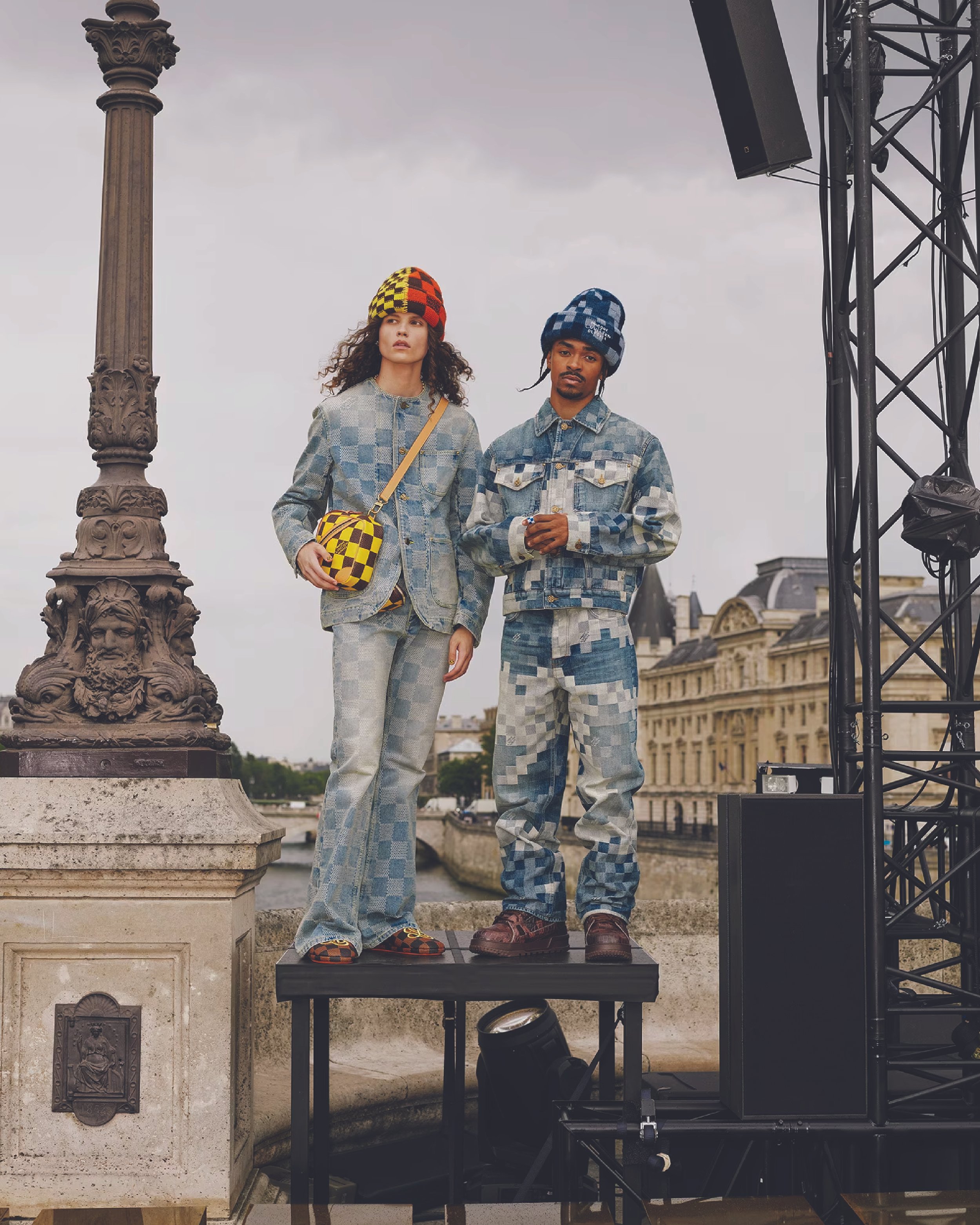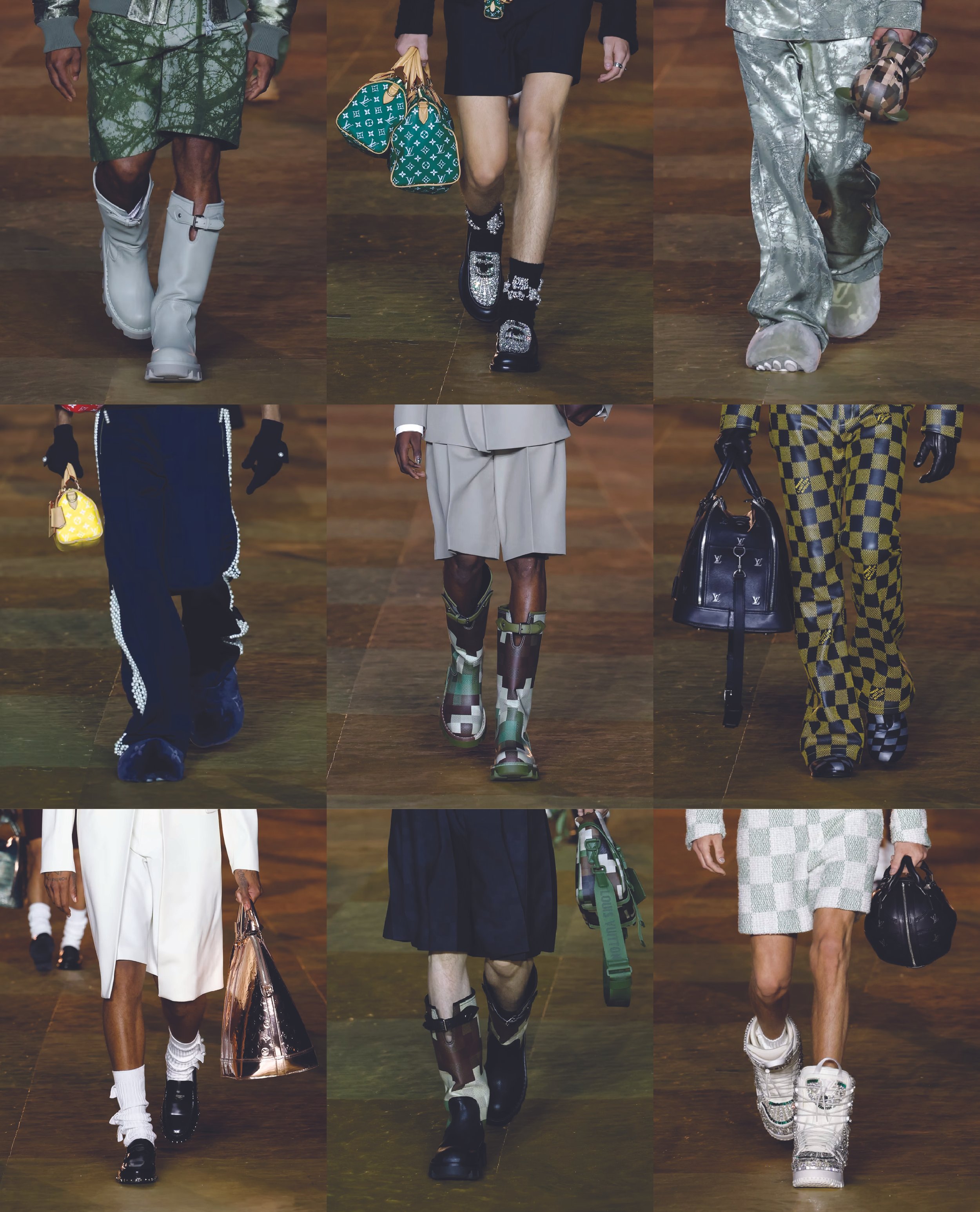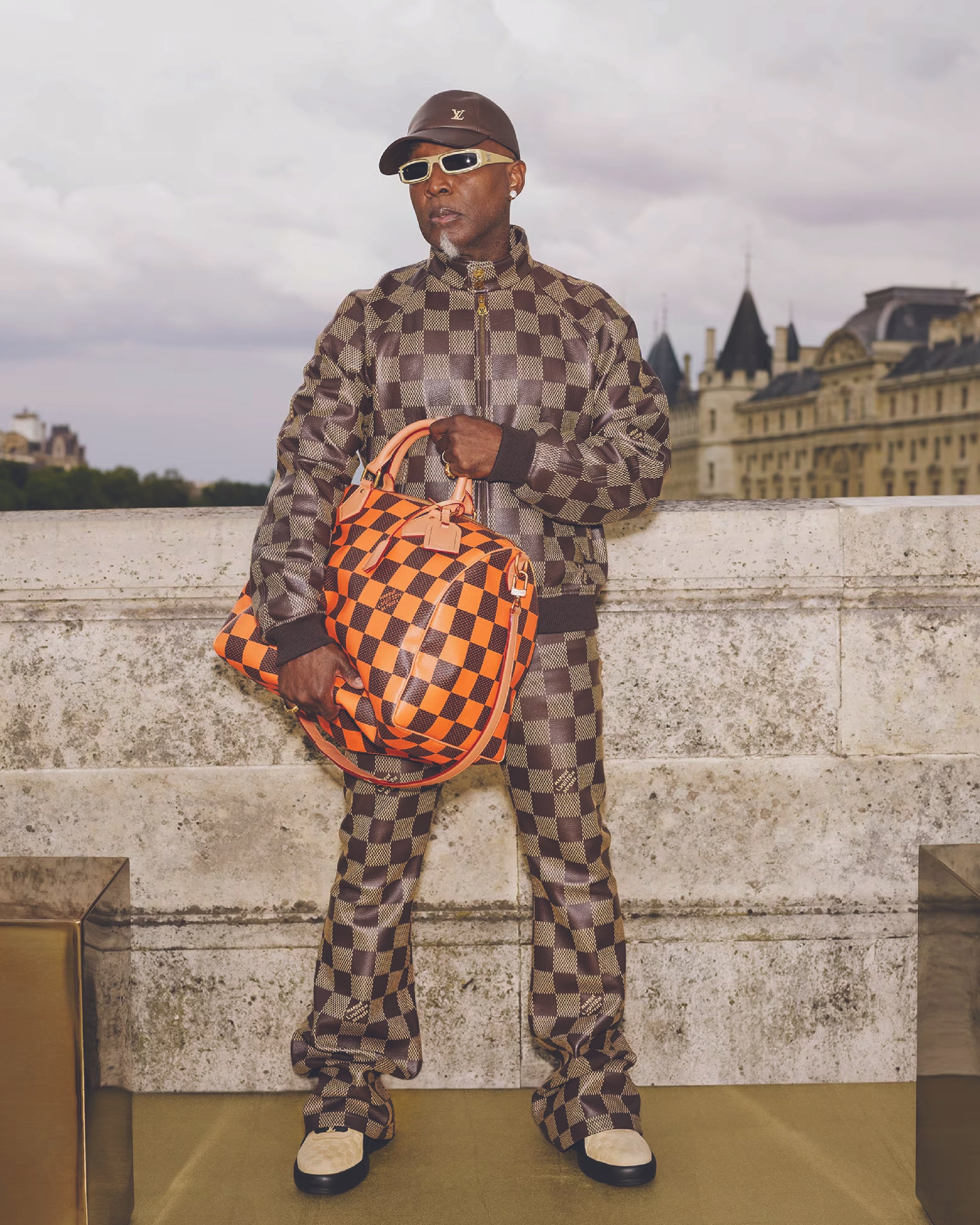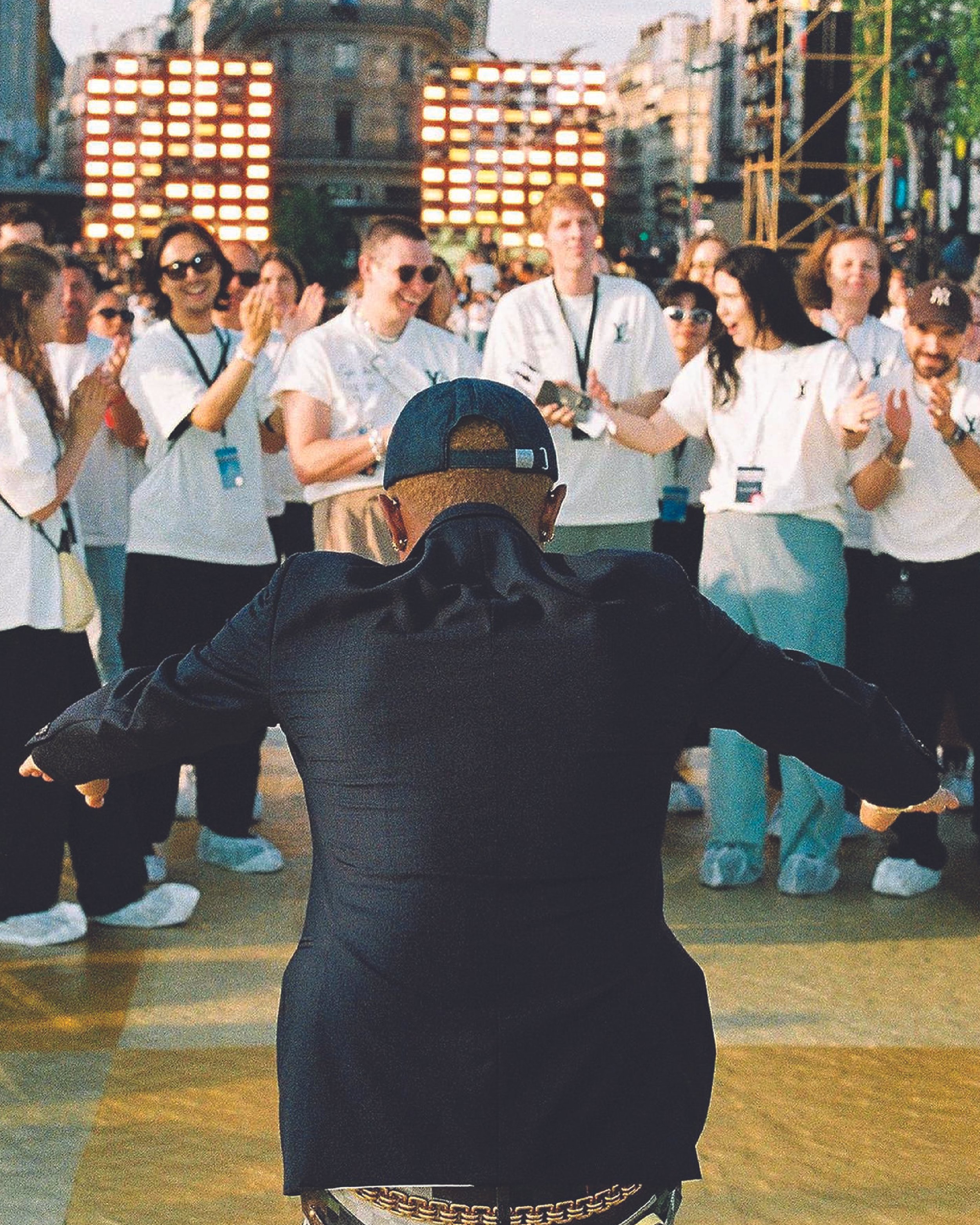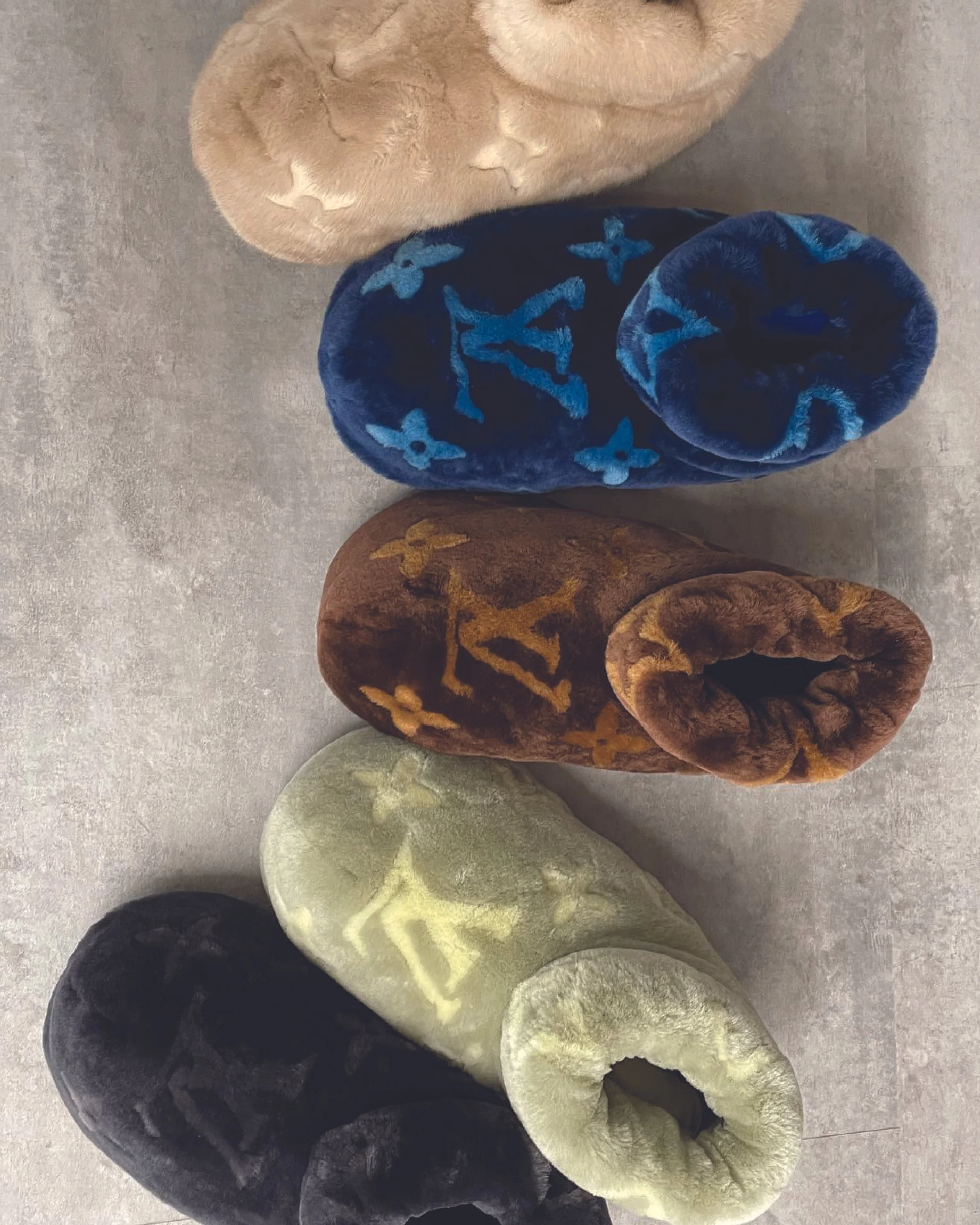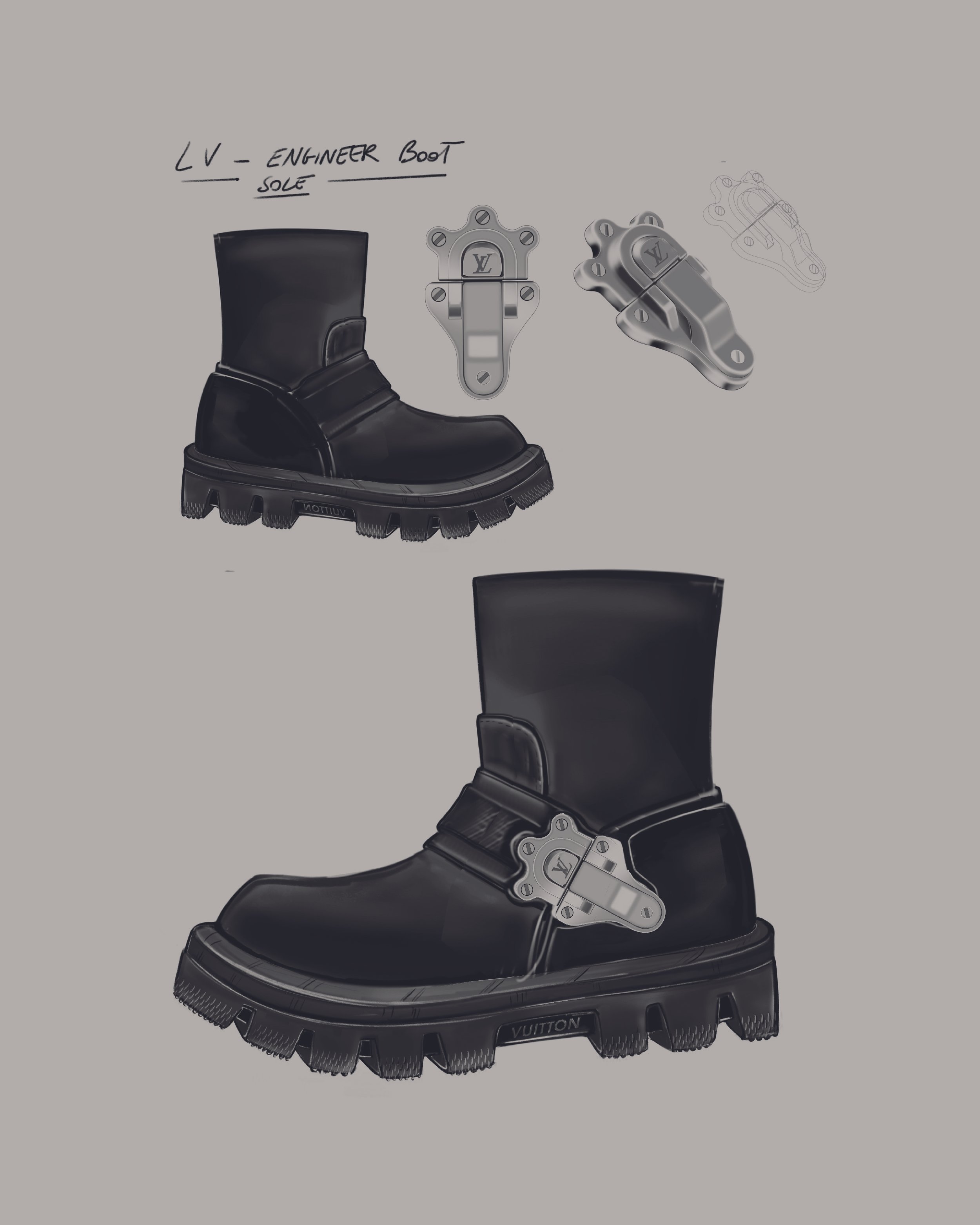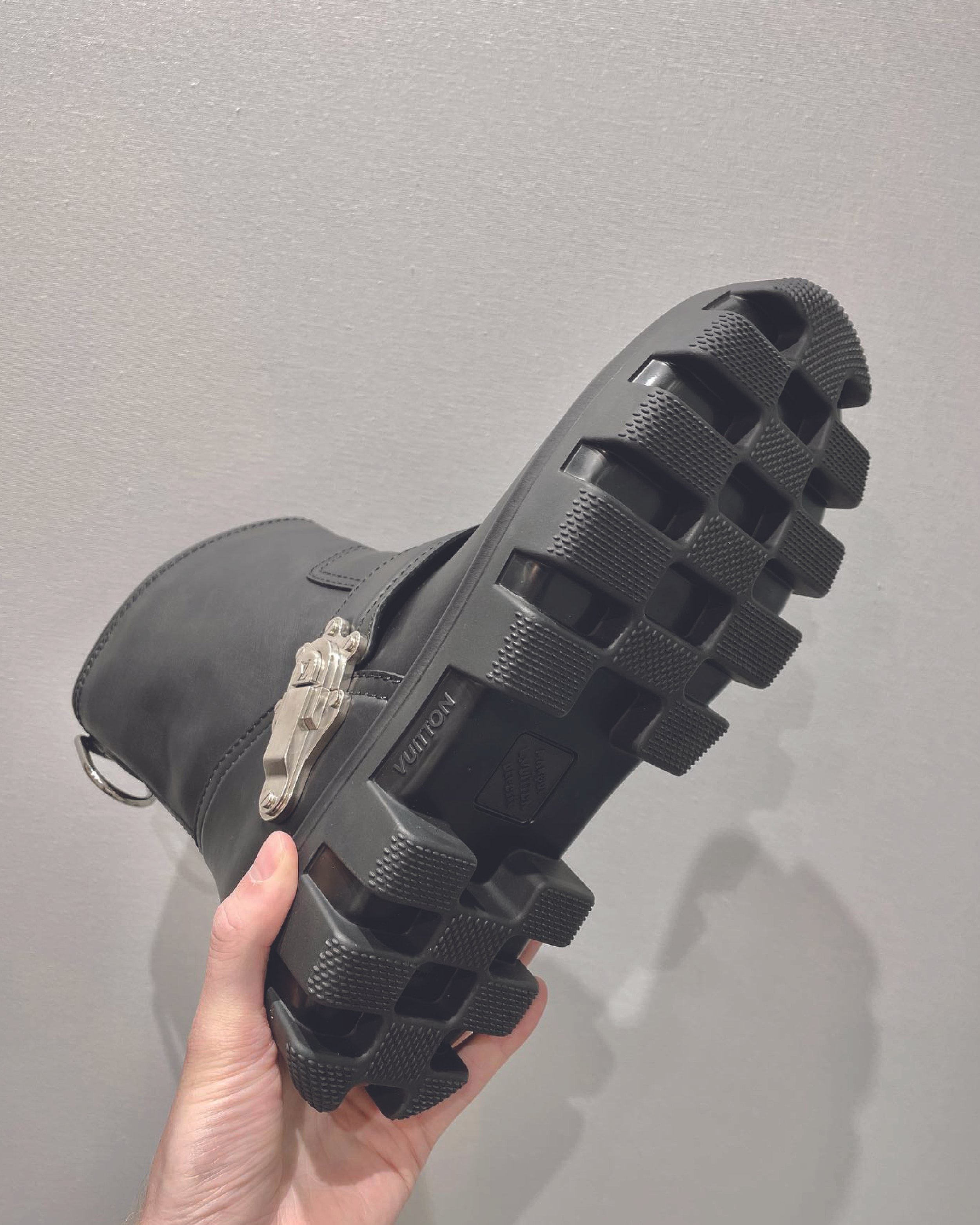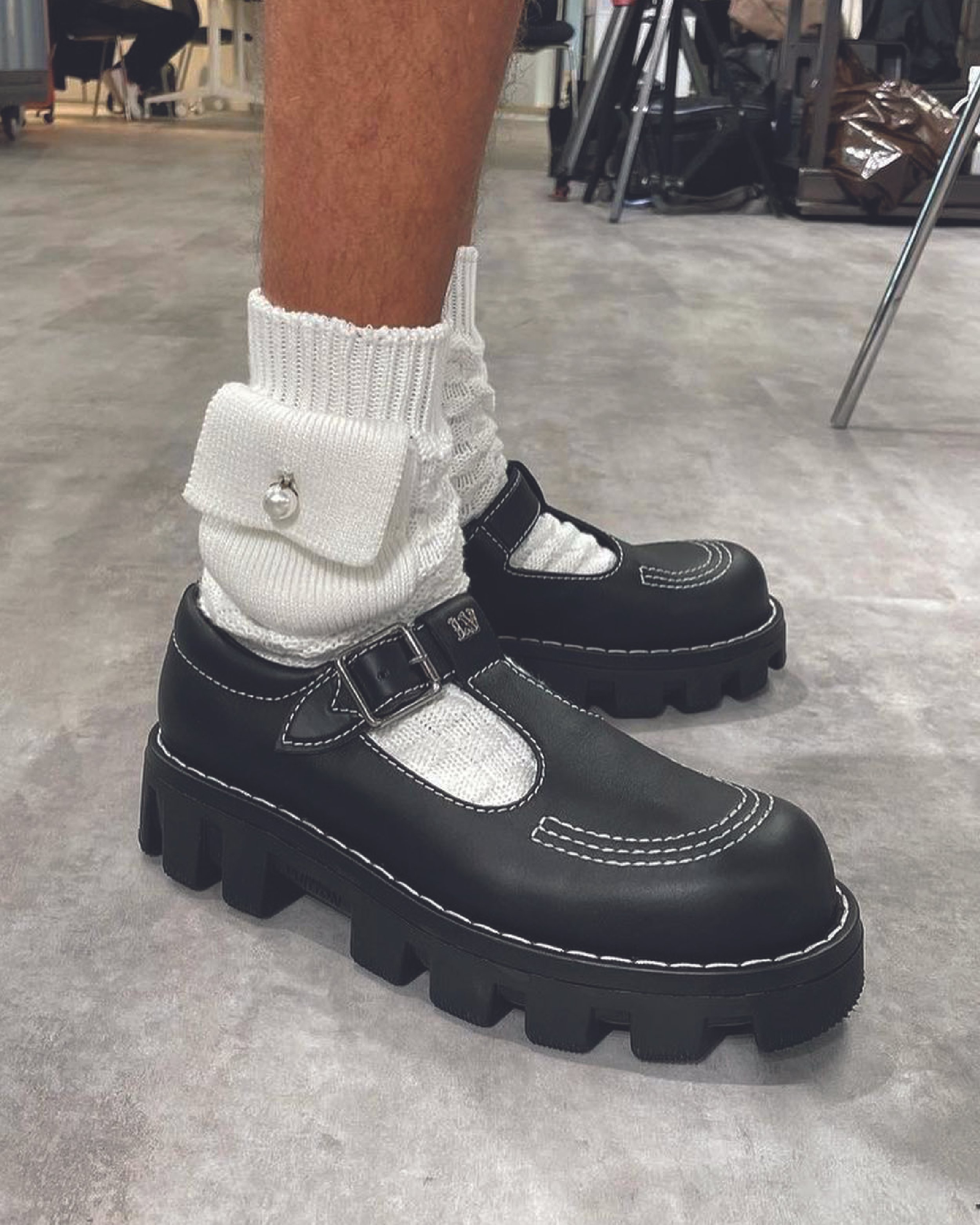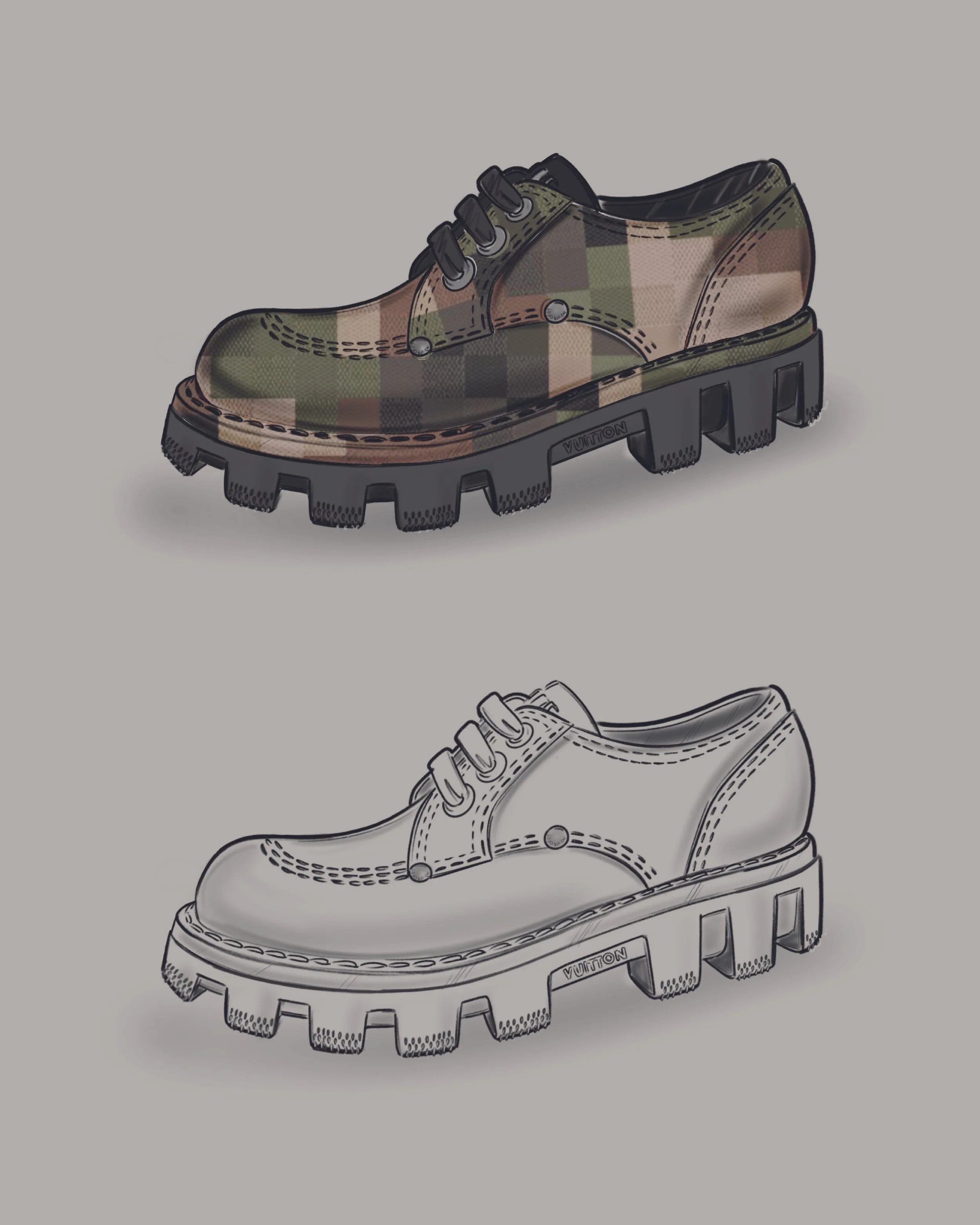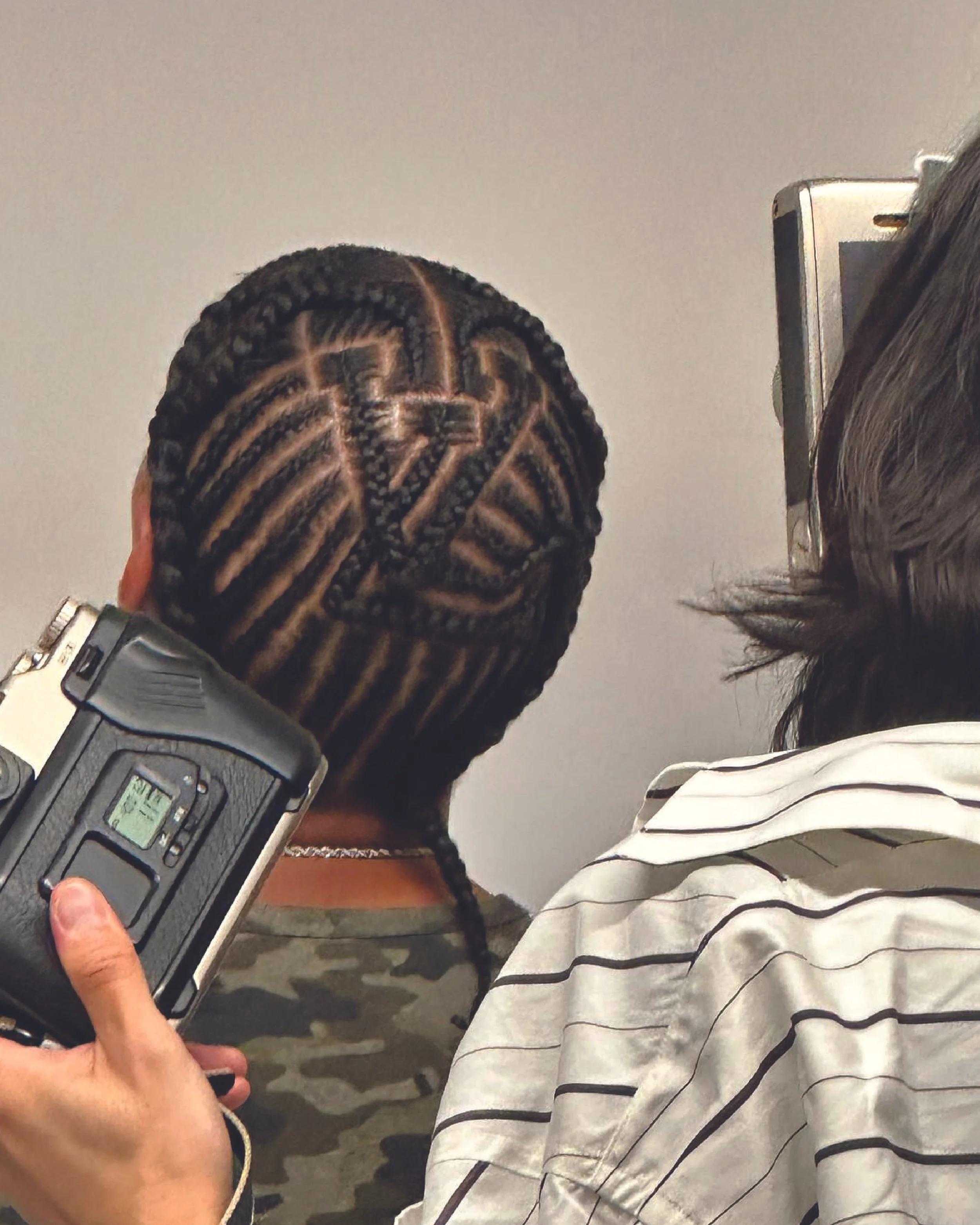The Luxury Playbook II : Louis Vuitton
Post-show Reflection with the Men’s Footwear Design Team
Words: Sian Lori
Just before Pharrell debuted his first collection for Louis Vuitton Men’s, CONCEPTKICKS spoke with the house’s Head of Footwear Design, Mathias Patillon. After the show, we had the privilege to touch base again, alongside other key players of Louis Vuitton’s Footwear Design Team: Jeroen Vermeesch and Elliott Cox.
It’s been a month since Louis Vuitton dressed up the Pont Neuf and delivered Pharrell’s debut Menswear collection. Perhaps one of the most anticipated events in the fashion calendar, it was a marriage of luxury and pop culture, a celebrity spectacle that demonstrated not only the influence of Pharrell’s multi-hyphenate career but the resources and outlook of LVMH today.
The collection featured much of the predicted Y2K retro-futurism: bold signature prints and monograms, round rubberised sunglasses, lenses adorned with pearls and, in its self-referential abundance, the collection remained joyous, playful and beautifully crafted. There were nods to Americana and the catalogues of the 30s, 40s, 50s, fused with the show’s signature Damouflage print - LV’s famous chessboard Damier digitally rendered into a pixelated camouflage by E.T. Artist. From tailoring to streetwear, nostalgia seamlessly merged with modernity, drawing from the archives of both Louis Vuitton’s and Pharrell’s distinct fashion history. The perfect example of which was Pharrell’s designated “hero accessory”: a reimagining of the LV Speedy bag in primary colours that poked fun at garish counterfeit renditions. Despite their lurid colour-ways, Pharrell pushed the bounds of his “it”-bag, swapping its structured canvas for buttery crushed leather that saw the style fold and cascade in the bodies of its wearer. It was a vision of Louis Vuitton Men’s that welcomed not just young men but everyone, the entire Humanrace, so to speak.
It’s not every day that a designer ends their show with a musical performance of their own, but neither is it commonplace for a musician to sit at the helm of a luxury Parisian house. Upon the backdrop of the Seine, with an amass of high-profile guests in tow, Pharrell began a new chapter for the house and launched the LVMH conglomerate into astronomical new heights. Yet, as the baton was passed to Pharrell, the late Virgil Abloh’s presence was palpable. As the entirety of the design team took to the runway, Virgil’s spirit endured in the celebration of the house’s collective and collaborative working method. It is thanks to this method of openness and creative credit, established by Virgil and upheld by Pharrell, that we came to chat with Mathias Patillon, Jeroen Vermeesch and Elliott Cox for a rare insight into LV’s footwear and wider approach to design.
Whilst Mathias joined Louis Vuitton under Kim Jones, his current Footwear Design Team was curated under Virgil. Jeroen Vermeesch came to footwear firstly through his grandfather, a shoemaker in Belgium, and spent years in the technical footwear field before joining LV. Elliott Cox, by comparison, joined Vuitton as an intern, and despite no formal fashion or design training, rose to the role of studio assistant before being invited to join Mathias’ team. It’s safe to say this season’s footwear was as diverse and dynamic as its designers: there were soft, sneaker-style bowling shoes, monogrammed checked leather slippers, printed rain boots. The house’s classic dress shoes were amplified into lug-soled T-strap Mary Janes paired with voluminous white ruffled socks. There was the Fur Footprint: a low top shearling style that borrows the language of Louis Vuitton’s iconically obnoxious bundle bags and scarves. “It’s a shoe that doesn’t take itself too seriously” explains Jeroen, “so entirely extra in its proportions that it becomes funny”. Explicating the vast capabilities of LV, Elliott’s highlight of the season was a mid-top Checker Boot rendered in sand nubuck. The shoe is a demonstration of craftsmanship, “elevated by brushed metal logos, a tongue logo inlaid with pearls, heavy topstitching and an inner zip for versatile styling”. Despite the multiplicity of Louis Vuitton across clothing, footwear and accessories, the brand, and its team, maintains an unmistakable synergy.
“I’ve never experienced anywhere quite like Louis Vuitton” says Jeroen. It’s an environment in which every designer is encouraged to explore what they want to wear, what they believe is relevant, and the most important aspect of this approach is open discussion. “Working with Pharrell was like running water: fluid”, explains Mathias. Not only does Pharrell share Virgil’s affinity for the world’s of design, art, and music, placing culture at the centre of the luxury house, but he is committed to nurturing the talent of the existing team. Whether one designer is pulling references from the automobile industry, and the other from the likes of Dieter Rams, Jonathan Ive and Marc Newson, footwear is consistently inspired by the other facets of Louis Vuitton. As Jeroen puts it, “there are so many different inputs that you get - whether it’s bags, and their materials, or jewellery or knitwear - we see everything come together”, just look at the Checker Boot detailing that’s lifted from watches.“We can push the boundaries of shoes by pulling in things from other parts of the collection” and that’s the beauty of the studio. “There are always new ideas coming out of conversation, it’s how our storylines develop and an entire collection evolves” explains Mathias.
The Louis Vuitton of today is not only rich in history, culture and collaboration but rich in resources. With factories throughout Italy, LVMH employs some of the best craftspeople in the world, a fact very well highlighted by Pharrell throughout his debut, and "they rarely say no” laughs Jeroen. It’s the approach Pharrell took to re-designing the Speedy Bag, it’s the approach he’s maintained throughout his career, with his unique ability to put himself in unexpected spaces and a refusal to acknowledge limitations. To have such a wealth and depth of knowledge at your fingertips with few constraints and no target price point is the definition of luxury. “At LV it’s all about the idea and we can put a price on it after” explains Mathias. “It’s very enriching as a designer” adds Jeroen. That’s not to say they always get it right. At a house with as many moving parts as Louis Vuitton, design decisions often move fast and the team are often onto the next project before they can catch a breath. “There are always details and tweaks that we wish we would have done differently but we keep on moving” says Mathias. Luckily, as a luxury brand, there’s often the capacity to redesign or update a product in the following season, particularly when it comes to the uppers, and “that’s evolution”.
What’s most fascinating is that Louis Vuitton doesn’t follow an entirely top-down approach as the collective spirit persists throughout the design chain. “There’s an incredibly strong structure of people to bring your visions to life” and each new design “is a collaboration: from the designer, to the 3D designer, to the coordinator who finds the best suppliers and factories to the technicians”. As Mathias explains, there is space for everyone to bring their knowledge to the product, “it’s not like robots, people have autonomy to propose better materials or solutions, everyone is more in charge of their work”. There’s a great deal of trust across this network of designers and makers, one that fosters “beautiful relationships” and endless possibilities. It’s a working method that ultimately supports one of conscious fashion’s key pillars: transparency.
Transparency is not always the first priority of luxury fashion houses, but at Louis Vuitton suppliers and materials are traceable back to the source and there’s a real desire to “be honest about our practices” explains Mathias. This transparency comes full circle when it comes to social media, an area of growth for the brand. “It’s about opening doors and inspiring people, especially those who are just starting out in shoemaking and feel a disconnect between the tools and the final design” believes Elliott. “Whilst it's quite new in the luxury system things do seem to be moving that way”, after all it was Virgil who initiated sharing the behind-the-scenes of the design journey. “We are always surprised by the magnitude of responses and how just one or two images can really resonate with people” explains Jeroen. So often do we experience a fashion show of barely visible footwear, of glimpses and glances beneath hems, that these unique insights and instagram uploads have the ability to foster community (take it from us).
Whilst it’s impossible to predict the possibility of a product becoming viral -“if we were able to calculate it, we wouldn’t need marketing” laughs Mathais - that’s not really what it’s about. It’s also safe to say, at this point in his career, we don’t quite think Pharrell needs any help when it comes to designing incredibly covetable products. “Not everything we designed made this show and we’re already working on other stuff” reminds Mathais. Talking to the team, you can feel the excitement and promise of this new venture, of having someone truly inspirational at the helm again. With none other than Rihanna spearheading his first campaign, Pharrell boasts a skill often overlooked in the role of Artistic Director: an unrivalled ability to bring people together. We know he’ll continue to demonstrate this throughout his tenure at Louis Vuitton.

